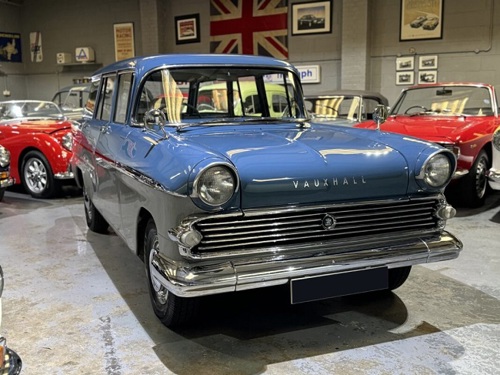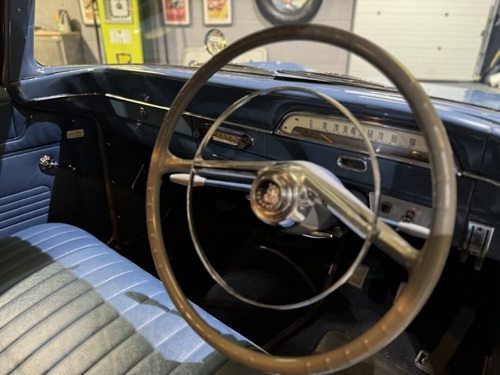THE FIRST VAUXHALL ESTATE CAR FROM LUTON
02 January 2025
The news that the Vauxhall factory in Luton is expected to close will sadden many readers. The time when cars such as this 1961 Victor F-Type Estate departed the plant seems utterly distant. Not only is it Vauxhall’s first factory-built estate car, but one with ‘the fresh new look of the future’. Plus, according to the marketing department, it was the “finest of them all”.

The F-Type saloon dates from 1957, and production issues resulted in Vauxhall being unable to launch the Estate until late February 1958. Your friendly local dealer could tell you that the Victor station wagon had upgraded suspension with a lower back axle ratio, and heavy-duty shock absorbers. He (it would have been ‘he’ in 1958) might further inform you the Estate came only with the Super trim level even if a heater cost an additional £14 15s for a heater and ‘Screen Clean’ windscreen washers another £2 16 6s.
However, no dealer would have to inform prospective buyers that the Victor was the most dramatic-looking estate car in its class. By 1958, many British motorists were accustomed to the quasi-American lines of the Ford Consul Farnham Mk. 2 and Hillman Minx Estates, but the F-Type looked as though it had emerged from a US television series. The fact that the Victor Estate was the first F-Type available with two-tone paint, further highlighted its stateside looks.
The Motor praised the Estate’s “exceptional handling qualities which make driving a real pleasure”. Autocar thought: “Much thought has gone into the Victor in order that the extra load capacity can be accommodated without upsetting the balance between appearance, comfort and performance. In this it succeeds admirably”. As with the saloon, the Estate received a facelift as the Series 2 in May 1959, and by 1960, Vauxhall marketed the F-Type via Canadian Chevrolet and Oldsmobile dealers as the Envoy. The Estate wore ‘Sherwood’ badging and was the ideal station wagon for the ambitious young Toronto lawyer.

July 1960 marked a final series of modifications as the Series 3, and this 1961 example wears the third-generation F-Type’s more restrained grille and modified fascia with a rather stylish black on silver strip speedometer. Unlike the early Victors, the exhaust no longer exits via the rear bumper - a wise development as this arrangement often caused it to fall off. It went from 0-60 mph in 24.8 seconds and had a top speed of 75 mph.
As for rivals, in 1961, the Consul Estate was £1,078, the Minx Series IIIB was £858, and the Austin A55 Cambridge Mk. II Countryman was £914, and the near-identical Morris Oxford Series V Traveller cost £929. By then, the Victor was £858 - a very reasonable sum for a station wagon “Built For The Motorway Age!”. The recently-opened M1 beckoned, tempting F-Type Estate drivers to test out its 1,508cc engine.
Vauxhall, whose 1950s and 1960s sales copy never fails to entertain, promised motorists “a car that will carry four adults plus two children plus lots and lots of luggage”. Such versatility came with “the handsomest estate car bodywork it’s ever been your good fortune to see”. In 1961, carrying a child between two adults on the front bench of a car with a steering column gear lever was not an unusual scenario.
Vauxhall replaced the F-Type with the FB in late 1961 and this ‘forge blue’ over ‘silver grey’ Estate for sale was ordered from Delves Motors Ltd of Norwich. It remained in the same family until 2013. And today, it is a vivid reminder of the day when Luton produced thousands of the F-Type Victor – the car that allowed the driver to “Put everything ordinary behind you”.
With thanks to South Norfolk Classics for their time and for the permission to use the images in this blog.
